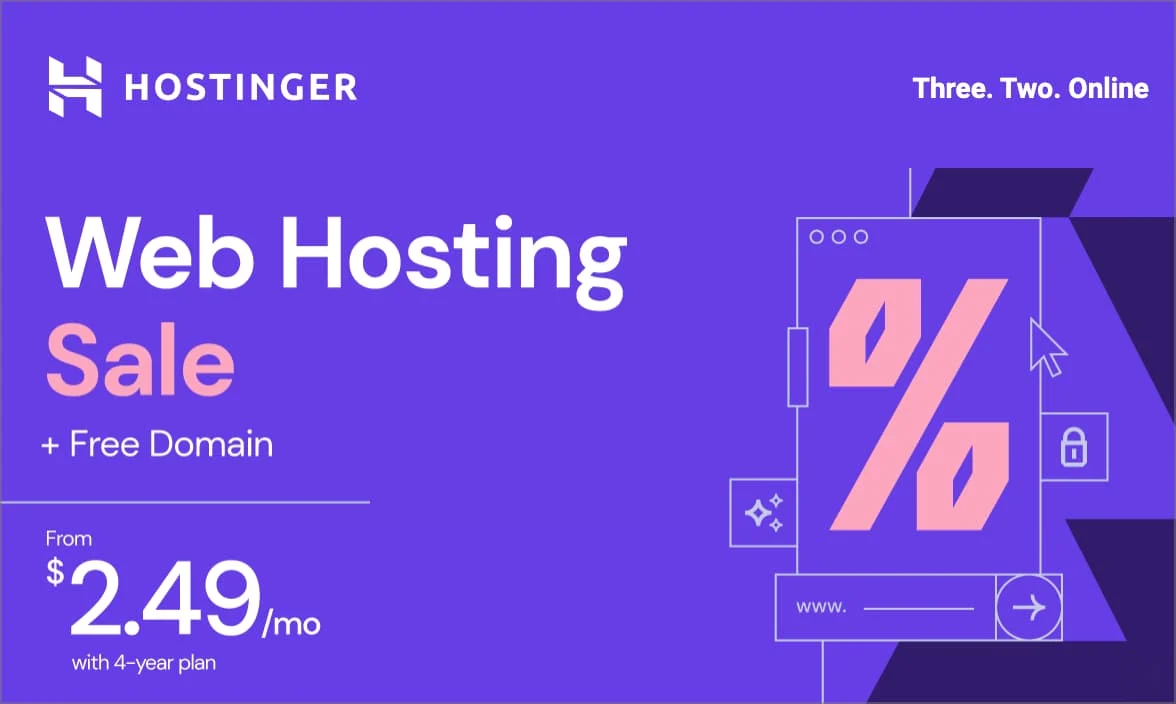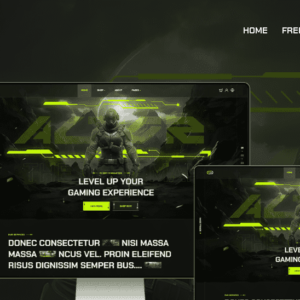
Freelance Web Design Jobs & Pricing: Your Guide to a Thriving Career in 2024
Web Design Jobs
The freelance revolution is in full swing, and nowhere is it more evident than in the ever-growing demand for talented web designers. In 2024, businesses of all sizes are scrambling to establish or enhance their online presence, fueling an unprecedented need for skilled professionals who can craft visually stunning and user-friendly websites. This surge in demand presents a golden opportunity for aspiring and experienced web designers alike to carve out a lucrative and fulfilling career path.

The allure of freelance web design lies in the freedom and flexibility it offers. As a freelancer, you have the autonomy to choose your projects, set your schedule, and work from anywhere in the world. This unparalleled level of independence can lead to a more balanced lifestyle and greater job satisfaction. Additionally, freelance web designers often enjoy higher earning potential compared to their traditionally employed counterparts.
Table of Contents
Landing Your First Freelance Web Design Jobs: A Guide for New Designers
Starting as a freelance web designer can be exciting but also daunting. The key is to strategically position yourself where potential clients are looking. Here’s how:
1. Online Platforms: Your Freelance Marketplace
Online platforms like Upwork, Fiverr, and Guru are your first stop. These act as virtual marketplaces where businesses and individuals post freelance web design jobs.
- Upwork: Known for larger projects and a more professional environment.
- Fiverr: Offers “gigs” starting at $5, perfect for building your initial portfolio.
- Guru: A balance between the two, with diverse project offerings.
Tips for Success:
- Optimize Your Profile: Use relevant freelance web designer keywords and showcase your best work.
- Bid Competitively: Consider offering lower freelance pricing initially to attract clients and gain experience.
- Deliver Excellent Service: Positive reviews will boost your visibility and reputation.
2. Niche Job Boards and Freelance Communities
Look beyond the general platforms and explore niche job boards that cater specifically to web design jobs. Websites like Dribbble, Behance, and Coroflot can connect you with clients seeking your specific expertise.
Freelance communities are also valuable. Join online forums or local groups to network, share knowledge, and potentially find referrals.
3. Social Media and Networking: Your Virtual Handshake
Your online presence is crucial.
- LinkedIn: The professional network. Connect with potential clients, join groups, and share your expertise.
- Twitter: Engage in conversations about web design, share your work, and follow industry leaders.
- Instagram and Pinterest: Visually showcase your designs and attract clients through aesthetics.
Don’t forget real-world networking! Attend industry events, meetups, or workshops to connect with fellow freelance web designers and potential clients.
4. Online Portfolio: Your Digital Showroom
Your portfolio is your most powerful tool. It showcases your web design skills and demonstrates your ability to meet client needs.
- Choose a Platform: Use a website builder like Wix or Squarespace, or showcase your work on Behance or Dribbble.
- Curate Your Best Projects: Focus on quality, not quantity. Highlight diverse projects that demonstrate your range.
- Include Case Studies: Explain the challenges, solutions, and results of your work.
- Optimize for SEO: Use relevant keywords like freelance web design and web design jobs to attract organic traffic.
Additional Tips for Success:
- Set Competitive Freelance Pricing: Research industry standards and consider your experience level.
- Specialize: Focus on a niche like e-commerce, UX/UI, or WordPress development.
- Market Yourself: Reach out to businesses directly, offer free consultations, or create a blog to share your expertise.
- Be Patient and Persistent: Building a successful freelance career takes time and effort.
By leveraging these strategies and creating a strong online presence, you’ll be well on your way to landing your first freelance web design jobs and building a thriving career.
Crafting a Winning Freelance Web Design Proposal
Think of your proposal as more than just a document—it’s your chance to make a first impression, showcase your expertise, and demonstrate why you’re the perfect web designer for the job. To achieve this, here’s a breakdown of the key elements:
- Cover Page & Introduction:
- Attention-grabbing title: Something like “Web Design Proposal for [Client’s Company/Project Name]”
- Your contact information: Make it easy for the client to reach you.
- A brief, engaging introduction: Highlight your passion for web design and how you can help the client achieve their goals.
- Understanding the Client’s Needs:
- Thorough research: Demonstrate that you’ve taken the time to understand the client’s business, target audience, and specific needs.
- Problem statement: Clearly articulate the challenges the client is facing.
- Proposed solution: Outline how your web design services will address those challenges and deliver value.
- Your Unique Value Proposition:
- Highlight your strengths: What sets you apart as a freelance web designer? Are you an expert in a particular niche, or do you have a unique design style?
- Case studies and portfolio: Showcase relevant examples of your past work that demonstrate your skills and expertise.
- Client testimonials: If you have positive feedback from past clients, include it here to build credibility.
- Project Scope and Deliverables:
- Detailed breakdown of services: Clearly define what you’ll be providing (e.g., website design, development, SEO optimization).
- Timeline: Establish a realistic timeline for the project, including milestones and deadlines.
- Revision policy: Specify the number of revisions included in the project scope.
- Pricing and Payment Terms:
- Transparent pricing: Provide a clear breakdown of your fees, either hourly rates or project-based pricing.
- Payment schedule: Outline when you expect to be paid (e.g., upfront deposit, milestones, project completion).
- Terms and conditions: Include any relevant legal information or project-specific terms.
- Call to Action:
- Encourage the next step: Invite the client to contact you to discuss the proposal further or to sign a contract.
- Express your enthusiasm: Show your excitement about the opportunity to work with them.
Tailoring Your Proposal
Every client and web design job is different, so it’s crucial to tailor your proposal to each specific opportunity. Here are some tips:
- Use the client’s language: Mirror the terminology and style used by the client in their job posting or project description.
- Focus on their priorities: If a client emphasizes a specific aspect of web design (e.g., user experience, mobile responsiveness), highlight your expertise in that area.
- Offer personalized solutions: Show that you’ve put thought into how your services can address the client’s unique challenges.

Showcasing Your Expertise
Beyond listing your skills and experience, there are other ways to showcase your expertise:
- Blog or portfolio website: Share your knowledge and insights through blog posts or articles related to web design.
- Social media presence: Use platforms like LinkedIn or Twitter to share your work, engage with other designers, and stay up-to-date on industry trends.
- Networking: Attend industry events or join online communities to connect with potential clients and other web design professionals.
By following these tips and tailoring your proposals to specific clients and web design jobs, you’ll significantly increase your chances of landing those dream freelance gigs and building a successful career in web design.
Building Your Reputation as a Freelance Web Designer
Your reputation is your most valuable asset in the competitive landscape of freelance web design. It opens doors to high-paying projects, attracts a steady stream of clients, and sets you apart from the competition. Here’s how to build a stellar reputation:
1. Delivering Excellence: The Cornerstone of Your Reputation
- High-Quality Work: Clients seek web designers who can translate their vision into a stunning, functional website. Master your craft – learn the latest design trends, understand user experience (UX) principles, and stay up-to-date with web technologies.
- Timely Delivery: Respect your clients’ timelines. Set realistic deadlines and stick to them. Consistent on-time delivery establishes you as a reliable professional.
- Within Budget: Transparent and accurate freelance pricing is crucial. Provide detailed project estimates upfront, and avoid surprise costs. Clients appreciate a web designer who respects their budget.

2. The Power of Positive Client Reviews and Testimonials
- Social Proof: Positive feedback from satisfied clients acts as powerful social proof. Potential clients are more likely to trust you when they see others vouching for your work.
- Showcase Your Expertise: Testimonials can highlight specific aspects of your freelance web design skills, whether it’s your ability to create user-friendly interfaces, design for mobile responsiveness, or implement complex e-commerce features.
- Building Trust: Positive reviews build trust and credibility. They show that you consistently deliver on your promises and exceed client expectations.
3. Strategies for Gathering Testimonials
- Ask Directly: Don’t be afraid to ask happy clients for a review or testimonial. You can provide a simple template to guide their feedback.
- Incentivize: Offer a small discount on future services in exchange for a review.
- Feature Testimonials: Prominently display testimonials on your website or portfolio. Consider creating a dedicated “Testimonials” page.
- Share on Social Media: Share positive client feedback on your social media channels to reach a wider audience.
4. Leveraging Freelance Platforms
- Freelance Job Platforms: Websites like Upwork and Fiverr offer a platform to showcase your skills and gather client reviews. Positive ratings and reviews on these platforms can significantly boost your visibility in freelance web design jobs.
- Portfolio Websites: Platforms like Behance and Dribbble allow you to showcase your best work and attract potential clients.
5. Going the Extra Mile
- Exceed Expectations: Go above and beyond for your clients. Offer exceptional customer service, provide helpful resources, and be responsive to their needs.
- Build Relationships: Treat each project as an opportunity to build lasting relationships with clients. This can lead to repeat business and referrals.
Remember: Your reputation as a freelance web designer is your most valuable marketing tool. By consistently delivering high-quality work, gathering positive reviews, and actively building your online presence, you can establish a strong reputation that attracts a steady stream of clients and helps you thrive in the competitive freelance world.
Pricing Your Freelance Web Design Services
1. Hourly Pricing
How it works: You charge clients a set rate for each hour of work dedicated to their project.
Pros:
- Flexibility: Ideal for projects with evolving scopes or when the exact workload is unclear at the outset.
- Fair compensation: Ensures you’re paid for every minute invested.
- Transparency: Clients appreciate knowing what they’re paying for.
Cons:
- Time tracking: Requires diligent time tracking, which can be cumbersome.
- Client apprehension: Some clients may worry about costs spiraling out of control.
- Less predictable income: Your income can fluctuate based on the number of billable hours.
Best for:
- Smaller projects or tasks with clearly defined deliverables.
- Ongoing website maintenance or updates.
- Consulting services or expert advice.
2. Project-Based Pricing
How it works: You charge a flat fee for the entire project, regardless of how long it takes.
Pros:
- Predictability: Both you and the client know the total cost upfront.
- Simplified billing: No need for meticulous time tracking.
- Incentive for efficiency: You’re motivated to complete the project efficiently.
Cons:
- Scope creep: Changes or additions can eat into your profit margin.
- Underestimating: It’s crucial to accurately estimate the project’s scope to avoid undercharging.
- Client hesitation: Some clients might prefer hourly rates for smaller projects.
Best for:
- Well-defined projects with clear scopes and deliverables.
- Redesigns of existing websites.
- Website development from scratch.
3. Retainer Pricing
How it works: You charge a recurring fee for a set number of hours or deliverables each month.
Pros:
- Consistent income: Provides a predictable and stable income stream.
- Stronger relationships: Fosters long-term partnerships with clients.
- Priority access: Clients often receive priority service and faster turnaround times.
Cons:
- Unused hours: If clients don’t utilize all their allotted hours, it can feel like lost revenue.
- Negotiating scope: Clearly define the scope of work included in the retainer to avoid misunderstandings.
- Client commitment: Requires clients to commit to a longer-term agreement.
Best for:
- Ongoing website maintenance and updates.
- Content creation and marketing support.
- Clients who need regular design or development assistance.
Choosing the Right Model
The best pricing model for your freelance web design business depends on several factors:
- Your experience level: New freelancers might start with hourly rates, while experienced ones can command project-based or retainer fees.
- Project complexity: Simple projects might be suited for hourly pricing, while complex ones warrant project-based or retainer models.
- Client preferences: Some clients have budget constraints or prefer a specific model.
- Your income goals: Consider which model aligns with your financial aspirations.
Remember: Don’t be afraid to experiment and find what works best for you and your clients. You can even combine pricing models, offering hourly rates for smaller tasks and project-based or retainer pricing for larger projects.

Feel free to ask if you have more questions or want to dive deeper into any aspect of freelance web design pricing!
Setting Competitive Rates as a Freelance Web Designer
Determining the right price for your freelance web design services is crucial for attracting clients, sustaining your business, and reflecting your value. Let’s delve into the key factors:
- Research Industry Standards and Average Freelance Pricing:
- Market Research: Begin by researching the current market rates for freelance web designers. Look at popular freelancing platforms (like Upwork, Freelancer), job boards, and industry surveys. Explore rates in your specific location and for designers with similar experience levels.
- Client Budgets: Understand the typical budgets that small businesses and individuals allocate for web design projects. This can give you a realistic range to work with.
- Differentiation: Analyze how your skills and expertise compare to other freelance web designers. Do you have specialized skills in e-commerce, UX design, or specific platforms (like WordPress or Shopify)? If so, you may be able to command higher rates.
- Factor in Your Experience, Skill Level, and Location:
- Experience: Your experience as a web designer significantly impacts your pricing. Beginners may charge lower rates to build their portfolio, while experienced professionals with a proven track record can justify higher fees.
- Skillset: Consider the range of skills you offer. Do you provide additional services like SEO optimization, content creation, or web maintenance? A broader skillset can justify higher rates.
- Location: Cost of living and demand for web design services vary by location. Adjust your rates accordingly to reflect your region’s economic realities.
- Consider Value-Based Pricing Based on Benefits Delivered to Clients:
- Value Proposition: Shift your focus from hourly rates to the value you bring to clients. How will your web design services help them achieve their business goals? Will your designs improve their online presence, increase conversions, or streamline user experience? Quantify the benefits your work delivers.
- Client Outcomes: Communicate the tangible results clients can expect from your services. Use case studies and testimonials to showcase your success in helping other businesses achieve their goals.
Freelance Web Design Pricing Models:
- Hourly Rate: A straightforward model, but it may not reflect the true value you provide. Consider using it for smaller projects or ongoing maintenance.
- Project-Based Pricing: This model allows you to estimate the total cost based on the project’s scope and complexity. It provides clarity for both you and the client.
- Value-Based Pricing: Tie your fees to the specific outcomes you deliver for the client. For instance, you could charge a premium for a website that generates a significant increase in leads or sales.
- Retainer Model: This model is suitable for ongoing web design and maintenance services. It provides a steady income stream for you and ensures consistent support for the client.
Additional Tips for Setting Competitive Rates:
- Negotiate: Be prepared to negotiate with clients, especially when starting out. Finding a mutually agreeable price can build trust and foster a positive working relationship.
- Review and Adjust: Regularly review your rates as you gain experience and your skills evolve. Don’t be afraid to raise your prices when your value proposition warrants it.
- Package Your Services: Offer different packages to cater to varying client needs and budgets. This can attract a wider range of clients.
Negotiating with Clients: Pricing Strategies for Freelance Web Designers
Pricing is one of the most critical aspects of freelance web design. It reflects your skills, experience, and the value you bring to a project. Here’s how to approach pricing discussions with confidence:
1. Know Your Worth (and Research It)
- Freelance Rates: Understand typical hourly rates or project fees for freelance web designers in your area and experience level. Websites like Upwork and Glassdoor can provide insights.
- Value-Based Pricing: Consider charging based on the value you deliver rather than just the time spent. For example, a high-converting website design might be worth more than a simple brochure site.
- Your Minimum: Determine the lowest rate you’re willing to accept to cover your expenses and desired income.
2. Prepare for the Conversation
- Package Options: Create tiered packages (e.g., basic, standard, premium) with different features and price points. This gives clients choices and can increase your average project value.
- Service Scope: Clearly outline the services included in each package (design, development, revisions, etc.) to avoid misunderstandings later.
- Project Timeline: Estimate the project duration and communicate it clearly to set expectations.
3. The Pricing Discussion
- Listen First: Start by understanding the client’s needs, budget, and expectations. This helps you tailor your proposal.
- Highlight Your Value:
- Portfolio: Showcase your best web design work and the results you achieved for previous clients (e.g., increased traffic, higher conversions).
- Testimonials: Share positive feedback from past clients to build credibility.
- Unique Skills: Emphasize any specialized skills or knowledge you bring to the table (e.g., e-commerce expertise, UX design).
- Justify Your Rates: Explain how your experience, expertise, and the value you provide justify your pricing. Focus on the return on investment (ROI) the client can expect.
- Be Flexible (But Firm): Be prepared to negotiate, but don’t undervalue your work. If a client’s budget is too low, consider offering a scaled-down version of your services or suggesting alternatives.
4. Presenting Your Proposal
- Professional Proposal: Submit a detailed written proposal that clearly outlines the project scope, timeline, deliverables, and payment terms.
- Payment Schedule: Break down the payment into milestones (e.g., deposit, design approval, project completion) to manage cash flow.
- Contract: Always have a written contract in place to protect both you and the client.
Additional Tips for Freelance Web Designers
- Niche Down: Specializing in a specific type of web design (e.g., e-commerce, medical websites) can command higher rates.
- Build Your Network: Attend industry events, join online communities, and connect with other freelancers to find potential clients and referrals.
- Market Yourself: Create a strong online presence (portfolio website, social media) to showcase your work and attract clients.
- Client Communication: Maintain clear and open communication with clients throughout the project to ensure everyone is on the same page.
Building a Thriving Freelance Web Design Career
Marketing Your Freelance Web Design Services: A Comprehensive Guide
As a freelance web designer, securing a steady stream of web design jobs depends on how effectively you market your services. It’s about positioning yourself as a go-to expert while reaching the right clients at the right time. Here’s a deeper look into those key strategies:
- Building a Powerful Online Presence:
- Professional Website: Think of your website as your digital storefront. It should showcase your best work (portfolio), outline your services (e.g., custom web design, e-commerce sites, landing pages), and provide easy ways for clients to contact you. Consider including a blog section where you can share insights, tutorials, or case studies – this is excellent content marketing that also attracts potential clients looking for information.
- Social Media: Choose the platforms where your target clients spend time. LinkedIn is great for professional networking, while platforms like Instagram or Pinterest can be used to showcase visually appealing web design projects. Share updates regularly, engage in conversations, and join relevant groups.
- Content Creation That Drives Interest:
- Portfolio: This is your most critical marketing asset. Make sure it’s curated to highlight projects that align with the types of web design jobs you want to attract. If you’re targeting small businesses, showcase those projects. If you specialize in a certain industry (like healthcare or education), feature relevant work.
- Blog Posts & Articles: Write informative pieces that demonstrate your expertise. Share your knowledge on web design trends, user experience (UX) principles, or even guides for choosing a freelance web designer. This content builds your credibility and can rank well in search engines, bringing potential clients to you.
- Case Studies: These in-depth looks at how you solved a client’s problem through web design are highly persuasive. Showcase the results you achieved (increased traffic, higher conversions, etc.).
- Search Engine Optimization (SEO) for Visibility:
- Keyword Research: Identify the terms and phrases potential clients use when searching for freelance web designers or web design jobs. Incorporate those keywords naturally into your website copy, blog posts, and social media descriptions.
- On-Page SEO: Optimize your website’s structure and content so search engines can easily understand and index it. This includes using descriptive page titles and meta descriptions, optimizing images, and ensuring a fast-loading site.
- Local SEO: If you’re targeting clients in a specific geographic area, make sure your business is listed on Google My Business and other local directories.
Contracts: Your Freelance Web Design Safety Net
In the world of freelance web design jobs, a contract is your most crucial document. It defines the scope of the project, timelines, deliverables, payment terms, and even how revisions will be handled.
- Freelance Web Designer Protection: Contracts safeguard your time and effort by clearly stating what’s expected from both you and the client. They help prevent scope creep (unpaid additional work) and ensure you get paid what you’re worth.
- Client Confidence: A well-crafted contract demonstrates professionalism and helps your client understand the process. It builds trust and reduces the chances of misunderstandings down the line.
Key Elements of a Web Design Contract:
- Project Scope: A detailed breakdown of the web design services you’ll provide (e.g., design concepts, responsive design, content management system integration).
- Timeline: Clearly defined milestones and a project completion date.
- Payment Terms: Your freelance pricing structure (hourly rate or fixed project fee), deposit requirements, and payment schedule.
- Revision Policy: Specify how many revisions are included and the process for requesting changes.
- Termination Clause: Outline conditions for ending the contract early.
Invoicing: Get Paid on Time for Your Freelance Web Design Work
Timely and professional invoicing is essential for maintaining a healthy cash flow.
- Clear and Detailed: Include your business name, contact information, project details, freelance pricing, payment terms, and a due date.
- Consistent Format: Use a standard template for all your invoices to maintain professionalism.
- Track Payments: Keep meticulous records of sent invoices, payments received, and any outstanding amounts.
Time Tracking: The Foundation of Freelance Web Design Pricing
Whether you charge hourly or use a fixed project fee, time tracking is crucial for understanding how long tasks take and for accurate freelance pricing.
- Tools: Utilize time-tracking software or apps to log your work hours on each project.
- Data-Driven Pricing: Analyze your time-tracking data to determine your hourly rate or project fees accurately. This helps you avoid undercharging for your valuable freelance web design skills.
Managing Finances and Taxes as a Freelance Web Designer
- Separate Accounts: Open a separate bank account for your business finances to keep things organized.
- Budgeting: Create a budget to track your income, expenses, and savings goals.
- Tax Preparation: Set aside a portion of your income for taxes throughout the year to avoid a surprise bill during tax season. Consult with a tax professional if needed.
- Record Keeping: Maintain thorough records of all income and expenses for tax purposes.
Balancing Your Workload and Avoiding Burnout
- Set Boundaries: Establish clear working hours and stick to them as much as possible.
- Take Breaks: Step away from your computer regularly to rest your eyes and stretch.
- Schedule Downtime: Plan regular time off to recharge and prevent burnout.
- Learn to Say No: It’s okay to decline projects if your schedule is full or if a project doesn’t align with your goals.
- Delegate: Consider outsourcing tasks that you don’t enjoy or that are outside your expertise.
Scaling Your Freelance Web Design Business: Strategies for Growth
Congratulations! Your freelance web design business is taking off, and you’re ready to level up. Whether you’re a seasoned freelance web designer or just starting with your first freelance web design jobs, scaling requires a thoughtful approach. Let’s dive into the key strategies:
1. Expanding Your Services & Team
- Identify Your Niche: What type of web design are you most passionate about and skilled in? Focusing on a niche (e.g., e-commerce, healthcare, creative agencies) can help you stand out and attract higher-paying clients.
- Offer Complementary Services: Consider broadening your offerings to include related services like:
- SEO optimization to help your clients’ sites rank higher in search results
- Content creation (e.g., website copy, blog posts)
- Ongoing website maintenance and support
- Build Your Team: As your business grows, you may need to expand your capacity. Hiring other freelance web designers or partnering with a small agency can help you take on larger projects and offer a wider range of services.
2. Partnering with Other Freelancers or Agencies
- Collaborate, Don’t Compete: Partnering with other freelancers or agencies can be a win-win situation. You can share resources, refer clients to each other, and even team up on larger projects.
- Look for Complementary Skills: Seek out partners who have expertise in areas you don’t, such as graphic design, content writing, or marketing.
- Create a Formal Partnership Agreement: To avoid misunderstandings, clearly outline the terms of your partnership in a written agreement.
3. Attracting Higher-Paying Clients & Projects
- Refine Your Pricing Strategy: As you gain experience and a stronger portfolio, gradually raise your freelance pricing to reflect your value. Consider offering tiered packages to cater to different budgets.
- Build a High-Quality Portfolio: Showcase your best work on your website and online platforms. Focus on projects that highlight your niche expertise.
- Market Your Services: Actively promote your freelance web design business through:
- Networking events and online communities
- Social media platforms like LinkedIn and Twitter
- Content marketing (e.g., blog posts, tutorials)
- Paid advertising (if your budget allows)
- Target Your Ideal Clients: Identify the types of clients who are willing to pay for high-quality web design. Look for businesses in your niche that have a strong online presence and are looking to invest in their website.
Example: Scaling a Freelance Web Design Business
Let’s say you specialize in designing websites for small businesses in the health and wellness industry. To scale your business, you could:
- Partner: Team up with a freelance content writer who specializes in health and wellness topics.
- Expand Services: Offer SEO optimization and website maintenance packages.
- Market: Create blog posts and social media content showcasing your expertise in designing websites for the health and wellness industry.
- Price: Increase your rates gradually as you gain experience and build a stronger portfolio.
Conclusion: Your Path to Freelance Web Design Success
In the ever-evolving landscape of freelance web design, success is within reach for both aspiring and established designers. Whether you’re just starting or looking to refine your existing practice, the key takeaways from this guide provide a roadmap for achieving your goals.
Key Takeaways:
- Embrace Continuous Learning: The field of web design is constantly changing, with new technologies, trends, and best practices emerging regularly. To remain competitive and offer cutting-edge solutions to clients, invest in ongoing education and skill development. Stay abreast of the latest design software, coding languages, and user experience principles.
- Develop a Strong Portfolio: Your portfolio is your digital storefront, showcasing your skills and expertise to potential clients. Carefully curate your best work, highlighting diverse projects that demonstrate your versatility and proficiency in various design styles and techniques.
- Master Client Communication: Effective communication is paramount in the freelance world. Learn to actively listen to your clients’ needs, clearly articulate your design vision, and provide regular progress updates throughout the project lifecycle. Building strong client relationships fosters trust and leads to repeat business and referrals.
- Price Your Services Strategically: Determining your freelance pricing can be challenging. Research industry standards, consider your experience level, and evaluate the scope and complexity of each project to arrive at a fair and profitable rate. Don’t undervalue your skills, but remain competitive within your market.
- Market Your Expertise: Building a successful freelance career requires effective marketing. Create a compelling online presence through a professional website and social media profiles. Network with other designers, attend industry events, and utilize online platforms to showcase your work and attract new clients.
- Adapt and Evolve: The freelance web design landscape is dynamic. Be prepared to adapt your services, pricing, and marketing strategies as needed to meet the changing demands of the market. Embrace new technologies, experiment with emerging design trends, and stay ahead of the curve.
Your Future in Freelance Web Design
Freelance web design offers a fulfilling and flexible career path for those with a passion for creativity, technology, and entrepreneurship. By mastering these key takeaways and staying dedicated to your craft, you can unlock endless possibilities in this exciting field. Whether you dream of working with renowned brands, launching your own design agency, or simply enjoying the freedom of a location-independent lifestyle, the tools for success are at your fingertips.
FAQs
How do I get started as a freelance web designer with no experience?
Start by building a solid foundation in web design principles and technologies. Take online courses, tutorials, or enroll in a web design program.
Create personal projects to practice your skills and showcase your work in a portfolio.
Offer to design websites for friends, family, or local businesses at a discounted rate to gain experience and build your portfolio.
Network with other designers and potential clients online and offline.
How do I set my freelance web design rates?
Research industry standards and average rates for designers with similar experience and skills in your location.
Consider the scope and complexity of each project, the value you bring, and your desired income level.
Offer different pricing packages or hourly rates to accommodate various client budgets.
How do I find freelance web design jobs?
Create a professional online presence with a website and portfolio showcasing your best work.
Join freelance platforms and job boards to find leads and connect with potential clients.
Network with other designers, agencies, and businesses in your niche.
Attend industry events and conferences to meet potential clients and build relationships.
What skills do I need to be a successful freelance web designer?
Technical skills: Proficiency in design software (e.g., Adobe XD, Figma), coding languages (e.g., HTML, CSS, JavaScript), and content management systems (e.g., WordPress).
Creative skills: Ability to create visually appealing and user-friendly designs that meet client objectives.
Communication skills: Effective communication with clients to understand their needs, present ideas, and manage expectations.
Business skills: Marketing yourself, managing finances, and providing excellent customer service.
How do I stay up-to-date with the latest web design trends?
Follow industry blogs, publications, and social media accounts.
Attend webinars, workshops, and conferences.
Experiment with new tools and technologies.
Network with other designers and share knowledge.
How do I create a strong web design portfolio?
Showcase your best work that demonstrates your skills and versatility.
Include a variety of projects that highlight different design styles and techniques.
Use high-quality images and provide clear descriptions of each project, outlining your role and responsibilities.
Consider creating a personal website to host your portfolio and showcase your brand.
How do I manage my time effectively as a freelance web designer?
Set clear project goals and deadlines, and break down tasks into smaller, manageable chunks.
Use project management tools to track progress, manage tasks, and communicate with clients.
Prioritize tasks based on urgency and importance.
Avoid distractions and set boundaries between work and personal time.
How do I handle difficult clients or projects?
Maintain open and honest communication with clients throughout the project.
Clearly define project scope and expectations upfront to avoid misunderstandings.
Address concerns and issues promptly and professionally.
Be willing to compromise and find solutions that work for both parties.
Know when to walk away from a project if it’s not a good fit or the client is unreasonable.
How do I promote my freelance web design services?
Create a strong online presence with a professional website and portfolio.
Utilize social media platforms to showcase your work and connect with potential clients.
Network with other designers, agencies, and businesses in your niche.
Attend industry events and conferences to meet potential clients and build relationships.
Offer free consultations or webinars to showcase your expertise and attract leads.
What are the advantages and disadvantages of being a freelance web designer?
Advantages:
Flexibility and freedom to work on your own terms and set your own schedule.
Variety of projects and clients, allowing you to explore different design styles and industries.
Potential for high earning potential depending on your skills and experience.
Opportunity to build a personal brand and reputation.
Disadvantages:
Inconsistent income and the need to constantly find new clients.
Self-discipline and time management are crucial for success.
Isolation and lack of collaboration with colleagues.
Need to handle all aspects of the business, including marketing, finances, and client communication.
What are some common mistakes to avoid as a freelance web designer?
Undercharging for your services and undervaluing your expertise.
Taking on too many projects at once and sacrificing quality for quantity.
Neglecting your own branding and marketing efforts.
Failing to communicate effectively with clients and manage expectations.
Not staying up-to-date with the latest design trends and technologies.
How do I deal with unpaid invoices or late payments?
Clearly outline payment terms and deadlines in your contract.
Send invoices promptly and follow up with reminders if payments are overdue.
Consider offering a discount for early payments or charging late fees.
If necessary, seek legal advice or use a collection agency to recover unpaid invoices.
How can I stand out from the competition in the freelance web design market?
Specialize in a niche or industry to target specific clients and showcase your expertise.
Develop a unique design style and brand identity that differentiates you from others.
Offer additional services like SEO optimization, content creation, or website maintenance.
Provide exceptional customer service and build strong relationships with clients.
Continuously learn and improve your skills to stay ahead of the curve.
What are some essential tools and resources for freelance web designers?
Design software: Adobe XD, Figma, Sketch.
Code editors: Visual Studio Code, Sublime Text, Atom.
Project management tools: Asana, Trello, Basecamp.
Communication tools: Slack, Zoom, Google Meet.
Online courses and tutorials: Udemy, Coursera, Skillshare.
Design inspiration websites: Dribbble, Behance, Awwwards.
How do I create a healthy work-life balance as a freelance web designer?
Set clear boundaries between work and personal time.
Schedule regular breaks and vacations to recharge and avoid burnout.
Create a dedicated workspace that is free from distractions.
Prioritize your health and well-being by eating nutritious meals, exercising regularly, and getting enough sleep.
Make time for hobbies and activities that you enjoy outside of work.
I need Services with …
- Wordpress Service
- Shopify Service
- Youtube Service
- Cv and resume Service
- Linkedin Service
Latest Post
-
Top Daily Taste WordPress Theme: Best Choice for Your Site
$ 15Original price was: $ 15.$ 13Current price is: $ 13. Add to cartAdd to WishlistAdd to Wishlist -

Get Hostinger’s Low-Cost Hosting Now!
Don’t miss out on affordable hosting with Hostinger – click now to bring your website online at an unbeatable price!










